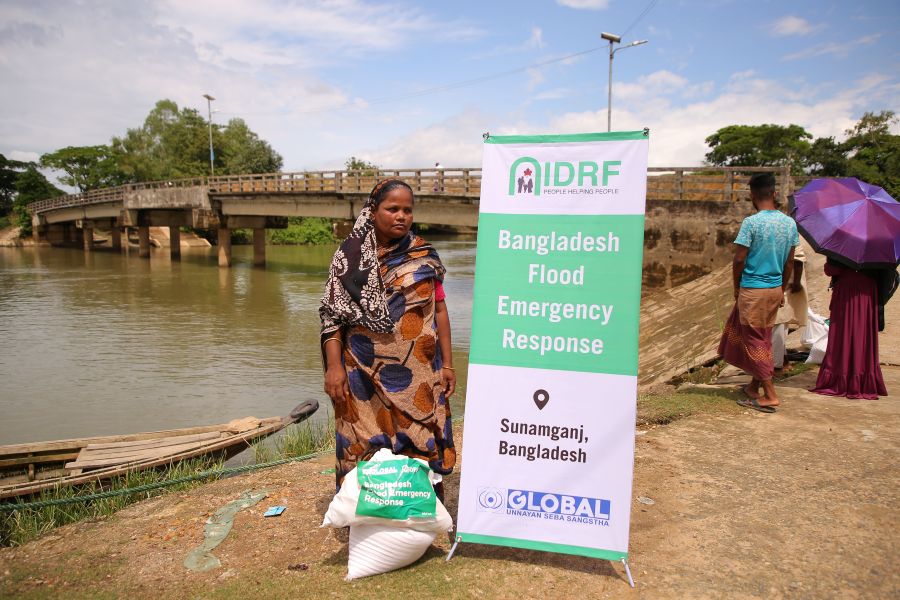
Case Study - IDRF - Flood Response 2022 - Sakina Begum

Purpose of Case Studies |
Case studies are an excellent tool used in the monitoring and evaluation of a project. IDRF requires a minimum of two case study submissions per reporting period to highlight some of the unique experiences and stories of IDRF’s project beneficiaries. A case study is more than a simple reiteration of the services a beneficiary received under a specific project. A case study should tell a unique story of a beneficiary and should demonstrate the effectiveness and impact of a project in addressing specific challenges outlined in the project agreement. A case study should explain the short and long-term benefits a beneficiary received as a participant of an IDRF project. Overall, case studies involve looking at one experience in-depth and showing how this experience relates to the broader picture.
When structured, developed, and written correctly, a case study should engage the reader by clearly describing the situational context and the challenge(s) faced by a particular beneficiary. It highlights the importance of the current project and why there is a need for such programming. When shared through social media, case studies are extremely useful in raising awareness about specific global issues and encourage the reader to act and learn more about a project.
Developing Case Studies |
There are many ways to develop and structure a case study. For this project, a case study should be framed as a story having three main components: (1) a main character; in this case, the main character would be a project beneficiary, (2) a problem; this should include a description of the challenge(s) experienced by that beneficiary, and lastly (3) a solution; the solution should be a description of how that beneficiary’s participation in this project improved or mitigated the identified challenges.
Case Study Framework |
As previously stated, the purpose of a case study is to inform, engage and mobilize the reader to take action, learn more and remain engaged in the project and the work of the organizations involved. The purpose of this document is to provide a framework for all case study submissions ensuring consistency and compliance with IDRF reporting requirements.
Please note: Case study submissions are required at all scheduled reporting periods outlined on the payment and reporting schedule of the project agreement. Each case study should be accompanied by a minimum of two high-resolution, full-length JPEG photo attachments. Please DO NOT copy and paste pictures into this template as this affects the quality of the photos. Please complete the following framework by providing a minimum of two case studies per reporting period.
CASE STUDY 1 | |
Project Title | Emergency Family Pack for Flood Victim in Bangladesh |
Country | Bangladesh |
Region(s) | Sylhet Division, Sunamganj District, Chhatak Upazila |
Sector | Food Security and Nutrition |
Project Beneficiary | Indicate the [name] and [age] of the beneficiary featured in this case study. Sakhina Begum, 45 years old |
Challenges experienced by beneficiary | Describe the unique challenges faced by the beneficiary specific to the project sector. [Please include this information in point form]
|
Project impact | Describe the how this project improved or mitigated the challenges identified by the beneficiary. Please describe the short-term and long-term benefits of this project. [Please include this information in point form]
|
Completed Case Study (minimum of 2 paragraphs) | Insert the completed full-length case study.
45 years old Sakhina Begum is a visually impaired woman who lives in the Mondolipur village of Islampur Union situated in the Chhatak Upazila of Sunamganj. Her dream of getting married was ruined at the age of 12 when she got infected by small pox and lost both of her eyes which made her a burden to her day laborer father. When she lost her father, her brothers refused to take responsibilities for her expense. Sakhina Begum fell into the deep sea of suffering. But she did not lose hope and Allah SWT replied to her request by sending her sister and brother-in-law who were kind enough to take Sakhina under their wings. But the fate became cruel to her again when her brother-in-law also died leaving behind her sister and two children. To manage the expense of her household, Sakhina’s sister took sewing lessons and started working as a tailor. Sakhina’s Begum helped her sister in those work as much she could. But everything got destroyed on one night of June when the destructive flood washed away their only home. Sakhina and her family had to be shifted to a nearby shelter where they remained for more than 20 days. During this time, her family received some relief which also stopped after coming home. On top of that, you could barely stand a base for their house with the help of their neighbors that too without any walls. Now, she and her family are living in starvation. After hearing about the news of receiving food relief from GUSS and IDRF, Sakhina became really happy. She said, “I have received relief goods before but nothing compares to the large amount of donation from GUSS and IDRF.” She prayed for the betterment of GUSS and IDRF. |
Beneficiary Quotation #1 | Include a direct quotation from the beneficiary describing the unique challenges experienced by the beneficiary.
“I have received relief goods before but nothing compares to the large amount of donation from GUSS and IDRF.” |
Beneficiary Quotation #2 | Include a direct quotation from the beneficiary describing the positive impact of the project in relation to the challenges described above.
“The relief was not only includes basic commodities but also includes hygiene items”. |
Media | Provide a brief description of the case study pictures provided. Please ensure each case study is accompanied by a minimum of two pictures featuring the beneficiary participating in the project activities. The pictures were taken during distribution. Pictures are attached as Annex-6 |


